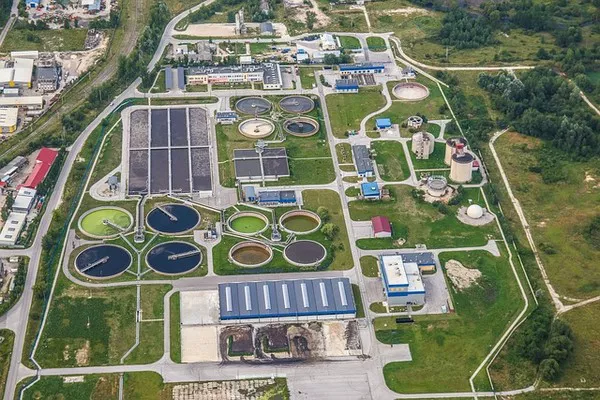Domestic sewage treatment plants play a pivotal role in maintaining the health and hygiene of communities. These facilities are responsible for processing and purifying wastewater from households, ensuring that the water released back into the environment is safe for human and ecological consumption. This article explores the intricate processes and mechanisms behind domestic sewage treatment plants, shedding light on how they effectively treat and purify wastewater.
The Importance of Domestic Sewage Treatment
Domestic sewage, often referred to as wastewater, consists of a complex mixture of organic and inorganic substances. It includes human waste, soaps, detergents, food particles, and various other contaminants that must be removed to prevent waterborne diseases and protect the environment. The primary objectives of domestic sewage treatment are to:
Remove contaminants: Eliminate pollutants and pathogens from the wastewater, ensuring it is safe for disposal or reuse.
Reduce environmental impact: Prevent the release of harmful substances into water bodies, which can disrupt ecosystems and harm aquatic life.
Promote sustainability: Reuse or return treated water to the environment while minimizing the need for fresh water intake.
Understanding the Processes
Domestic sewage treatment plants employ a series of physical, biological, and chemical processes to achieve these objectives. These processes are typically divided into three main stages: primary treatment, secondary treatment, and tertiary treatment.
Primary Treatment
Primary treatment is the first step in the sewage treatment process and primarily involves physical separation. Here are the key processes within this stage:
a. Screening: As wastewater enters the treatment plant, it passes through screens that remove larger debris such as sticks, leaves, and plastics. This initial step prevents clogging and damage to downstream equipment.
b. Grit Removal: Wastewater often contains small, heavy particles like sand and grit. These are settled out in grit chambers through a sedimentation process.
c. Primary Sedimentation: After grit removal, the wastewater flows into primary settling tanks, also known as sedimentation tanks. In these tanks, the flow is slowed, allowing heavier solids to settle to the bottom. The resulting sludge is removed for further treatment.
Secondary Treatment
Secondary treatment is a biological process that further purifies the wastewater. It focuses on removing organic matter and other dissolved substances. The key components of secondary treatment include:
a. Activated Sludge Process: In this method, wastewater is mixed with a culture of microorganisms (activated sludge) in aeration tanks. These microorganisms break down organic matter, consuming it as a food source. The resulting biological floc is then settled out in a secondary sedimentation tank.
b. Trickling Filters: Some treatment plants employ trickling filters, which consist of a bed of rocks or other media. Wastewater is sprayed or trickled over the media, allowing biofilms of microorganisms to grow and consume organic matter. The treated water is then collected at the bottom of the filter.
c. Rotating Biological Contactors: These are similar to trickling filters but involve discs that rotate through the wastewater. Microorganisms grow on the discs’ surfaces and break down organic matter as they are exposed to air.
Secondary treatment processes focus on reducing the Biological Oxygen Demand (BOD) and Suspended Solids (SS) in the wastewater, making it much cleaner.
Tertiary Treatment
While secondary treatment is effective at removing the majority of contaminants, tertiary treatment further refines the quality of the treated water. It is often necessary for meeting specific water quality standards or for water reuse purposes. Key tertiary treatment processes include:
a. Filtration: Wastewater passes through sand or membrane filters to remove remaining suspended solids and microorganisms.
b. Disinfection: To ensure the elimination of harmful pathogens, wastewater is treated with disinfectants such as chlorine, ultraviolet (UV) light, or ozone. This step makes the water safe for human consumption or discharge into natural water bodies.
c. Nutrient Removal: In some cases, excess nutrients like nitrogen and phosphorus are removed from the wastewater to prevent eutrophication in receiving waters.
Challenges and Innovations
Domestic sewage treatment plants face several challenges, including increasing population, emerging contaminants, and limited resources. To address these challenges, ongoing research and technological advancements have led to innovative solutions:
Decentralized Systems: In some areas, decentralized systems are becoming more popular. These smaller-scale treatment units can be located closer to the source of sewage, reducing the need for extensive infrastructure.
Resource Recovery: Modern treatment plants are exploring ways to recover valuable resources from wastewater, such as energy, nutrients, and clean water. Technologies like anaerobic digestion and algae-based systems are being employed for this purpose.
Smart Monitoring: The integration of advanced sensors and monitoring systems allows for real-time data collection and analysis. This ensures efficient operation and early detection of issues.
Green Infrastructure: The use of natural systems like constructed wetlands and vegetated swales is gaining traction as a sustainable way to treat wastewater, particularly for small communities.
Conclusion
Domestic sewage treatment plants play a critical role in safeguarding public health and the environment. Through a combination of primary, secondary, and tertiary treatment processes, these facilities efficiently remove contaminants, pathogens, and pollutants from wastewater. As the world grapples with water scarcity and pollution concerns, innovation in sewage treatment technology continues to evolve, offering more efficient and sustainable solutions. By understanding the mechanisms behind domestic sewage treatment plants, we can appreciate the vital role they play in ensuring the availability of clean water for our communities and the preservation of our natural ecosystems.

